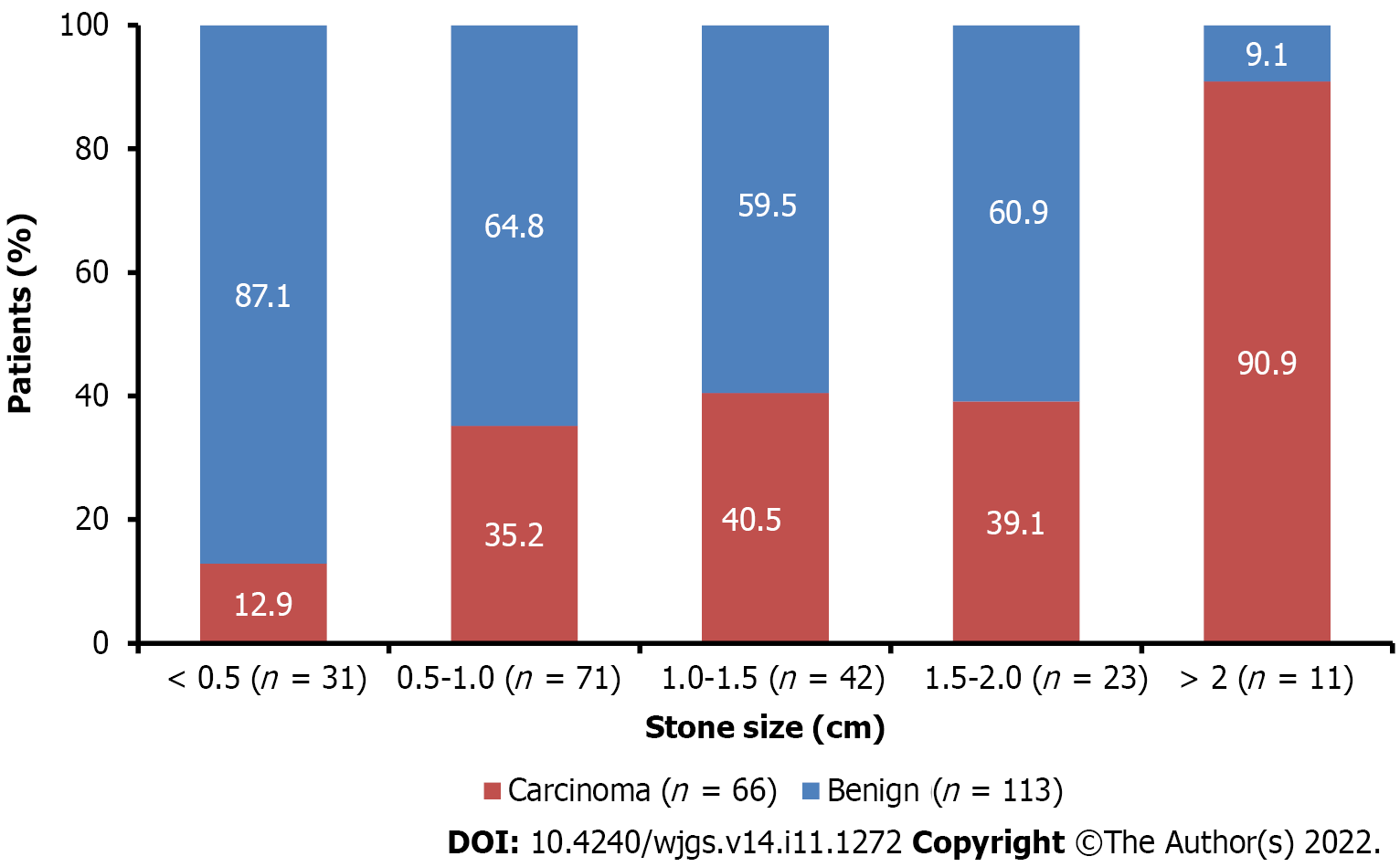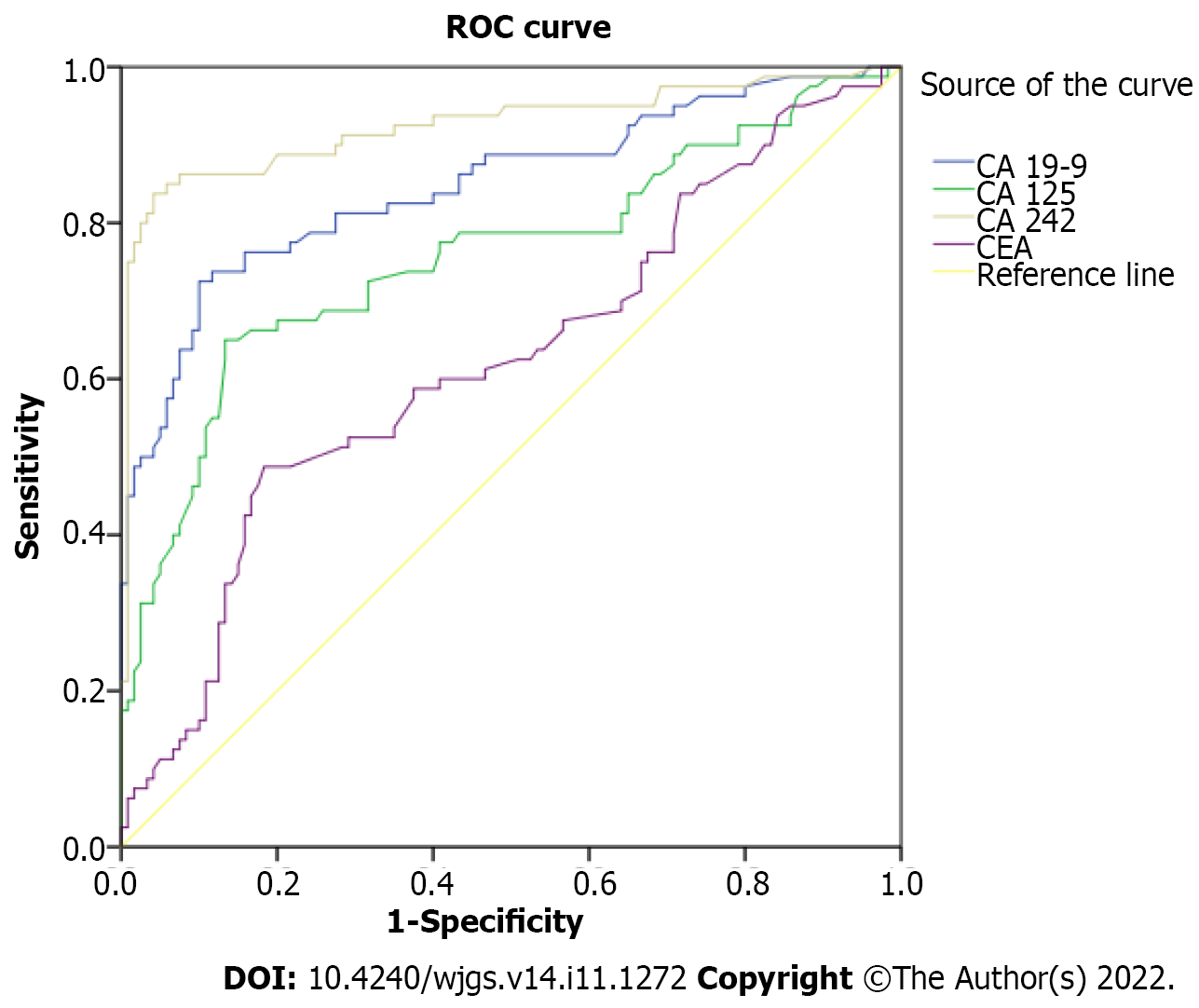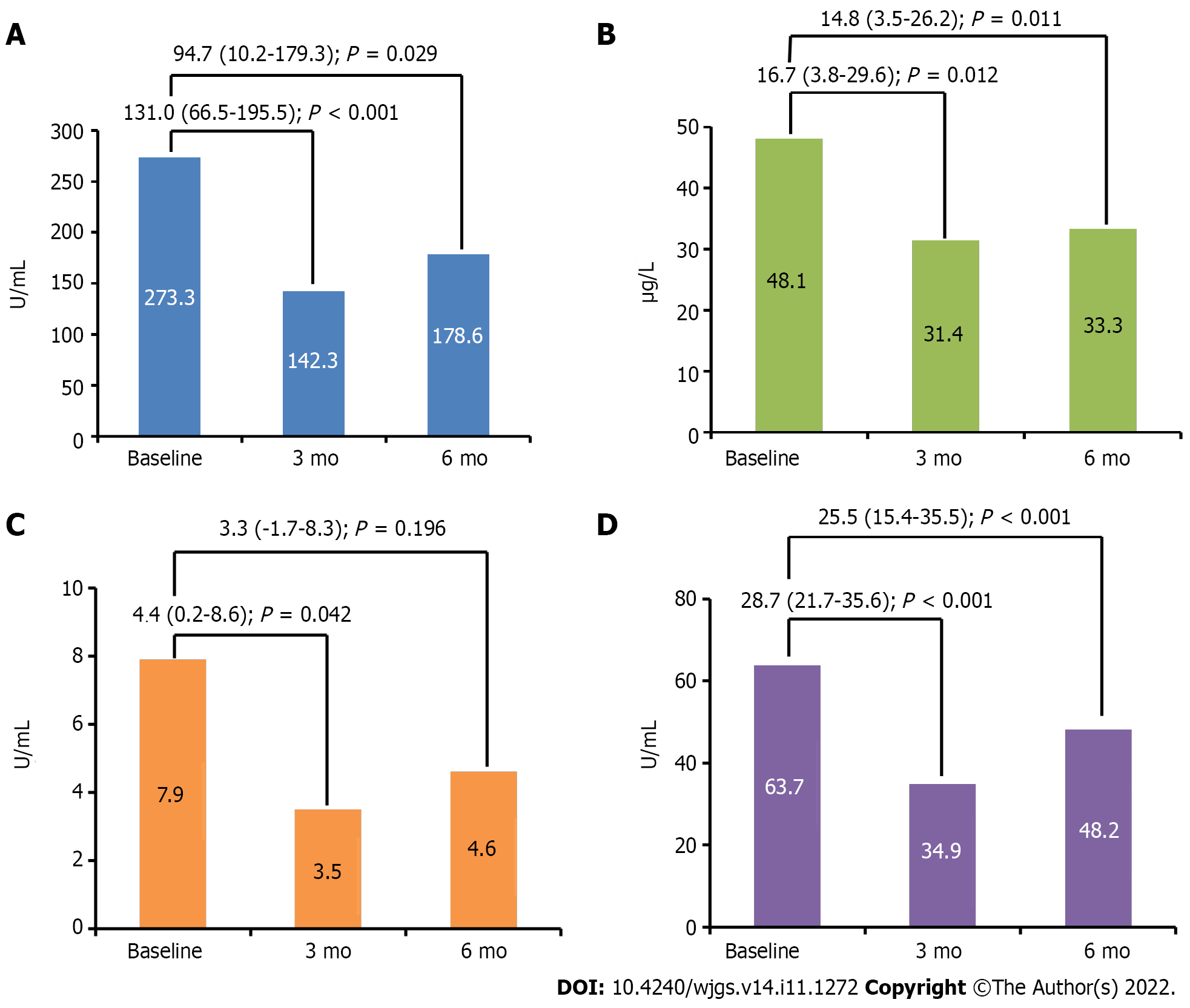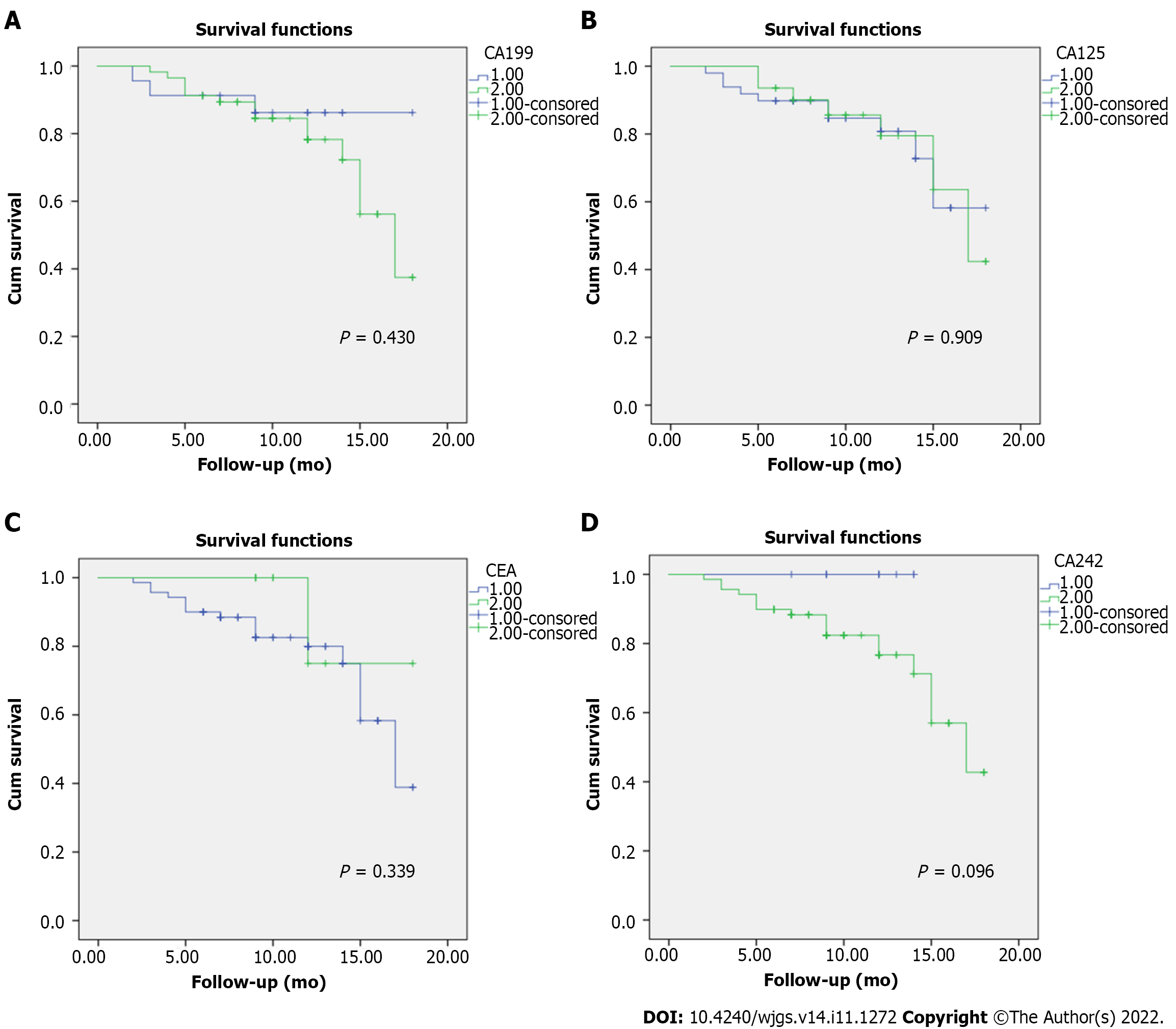Copyright
©The Author(s) 2022.
World J Gastrointest Surg. Nov 27, 2022; 14(11): 1272-1284
Published online Nov 27, 2022. doi: 10.4240/wjgs.v14.i11.1272
Published online Nov 27, 2022. doi: 10.4240/wjgs.v14.i11.1272
Figure 1
Stone size between patients with benign gallbladder disease and gall bladder cancer.
Figure 2 Receiver operating characteristic curve analysis showing diagnostic performance of carbohydrate antigen 19-9 (U/mL), carbohydrate antigen 125 (U/mL), carcinoembryonic antigen (µg/L), and carbohydrate antigen 242 (U/mL) in predicting gallbladder cancer vs benign gallbladder disease.
ROC: Receiver operating characteristic curve.
Figure 3 Comparison of tumor marker levels of carbohydrate antigen 19-9, carbohydrate antigen 125, carcinoembryonic antigen, and carbohydrate antigen 242 before and after surgical management of gallbladder cancer.
A: Carbohydrate antigen 19-9; B: Carbohydrate antigen 125; C: Carcinoembryonic antigen; D: Carbohydrate antigen 242.
Figure 4 Survival of patients with gallbladder cancer according to elevated vs normal marker levels of serum carbohydrate antigen 19-9 (U/mL), serum carbohydrate antigen 125 (U/mL), serum carcinoembryonic antigen (µg/L), and serum carbohydrate antigen 242 (U/mL) levels.
A: Serum carbohydrate antigen 19-9 (U/mL); B: Serum carbohydrate antigen 125 (U/mL); C: Serum carcinoembryonic antigen (µg/L); D: Serum carbohydrate antigen 242 (U/mL).
- Citation: Sinha SR, Prakash P, Singh RK, Sinha DK. Assessment of tumor markers CA 19-9, CEA, CA 125, and CA 242 for the early diagnosis and prognosis prediction of gallbladder cancer. World J Gastrointest Surg 2022; 14(11): 1272-1284
- URL: https://www.wjgnet.com/1948-9366/full/v14/i11/1272.htm
- DOI: https://dx.doi.org/10.4240/wjgs.v14.i11.1272
















